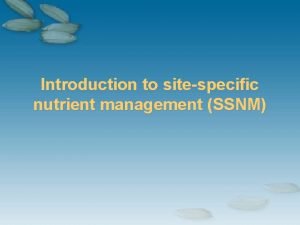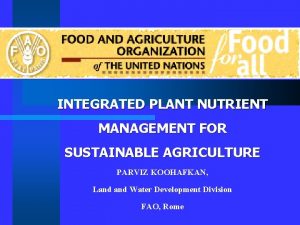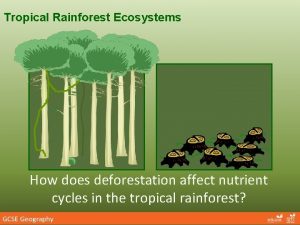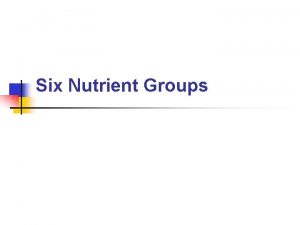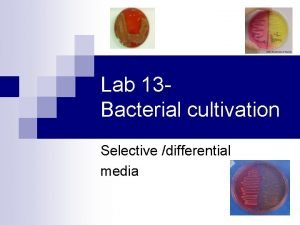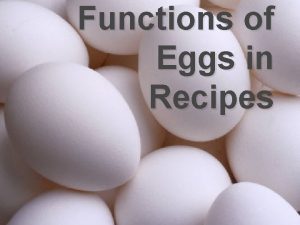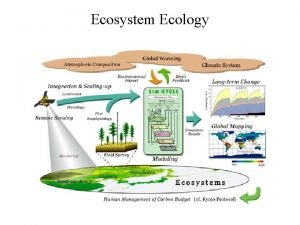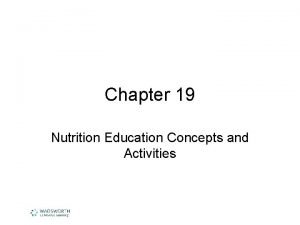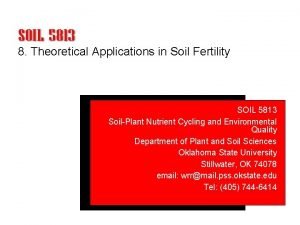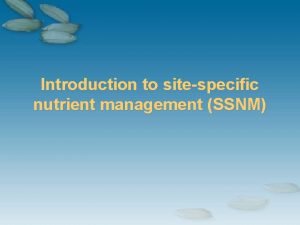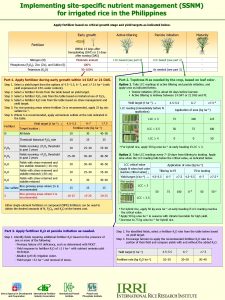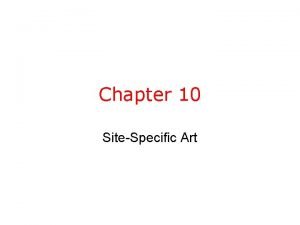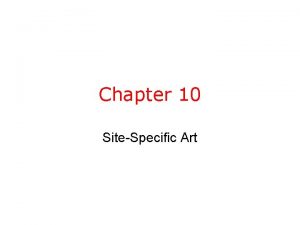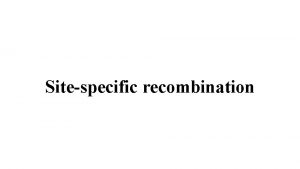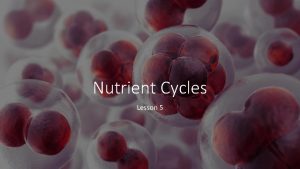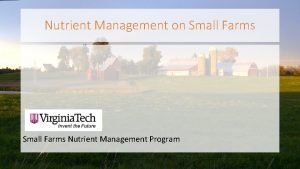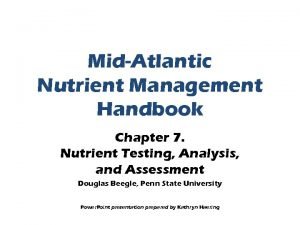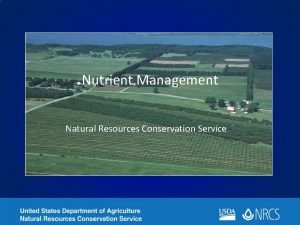Introduction to sitespecific nutrient management SSNM Need for













- Slides: 13

Introduction to site-specific nutrient management (SSNM)

Need for an improved approach to nutrient management for rice The need of rice for nutrients: • Can differ from field to field • Can differ year-to-year because of varying climate and growing-season conditions Fertilizer rates and timing should be adjusted to location and season-specific needs and conditions

SSNM: A plant-based approach SSNM provides an approach for ‘feeding’ rice with nutrients as needed • Make optimal use of existing nutrients, such as from soil, residues, and manures • Apply N fertilizer at the time and amount required by the rice crop • Apply P and K fertilizers based on crop need, as determined through the omission plot technique

Site-specific nutrient management (SSNM) 1. Establish a yield target – the crop’s total needs 2. Effectively use existing nutrients Feeding crop needs! 3. Fill deficit between total needs and indigenous supply

SSNM: A plant-based approach Feed the plant’s need for additional nutrients • Establish a yield target (plant’s need for nutrients) • Effectively use the indigenous supply of nutrients (soil, water, crop residues, and manures) • Apply fertilizer to fill the gap between crop need and indigenous supply • Firmly based on scientific principles of nutrient requirements of the crop to achieve high yields

Nutrient management for rice: “Match supply to need” 1. Apply only a moderate amount of fertilizer N within 2 weeks after transplanting or 21 days after sowing 2. Use the LCC to distribute N from 2 weeks after transplanting • Select an N dose and critical LCC value to achieve high yield and 18 to 25 kg grain yield increase per kg N applied • Achieve 1 ton yield increase with 40 to 55 kg N/ha 3. Apply sufficient P and K to overcome deficiency and replace nutrient removed with crop harvest • Apply P basal • Split apply K (50% basal and 50% at panicle initiation)

Source of nutrients taken up by rice • • • Soil Crop residues and manures Irrigation water Biological N 2 fixation Fertilizers

Source of nutrients taken up by rice Nitrogen Potassium Nutrient needed for yield target Biological N 2 fixation Irrigation water Crop residues & manures Soil

Source of nutrients taken up by rice Nitrogen Potassium Nutrient needed for yield target gap Biological N 2 fixation Irrigation water Crop residues & manures Soil Indigenous nutrient supply

Source of nutrients taken up by rice Nitrogen Nutrient needed for yield target Fertilizer Biological N 2 fixation Irrigation water Crop residues & manures Soil Potassium

SSNM aims to increase profit for rice farmers through • High yield • High efficiency of fertilizer use

Implementing SSNM • Match early application of N with low initial demand of rice for N. • Dynamically apply N based on leaf color, as a measure of plant need for N. • Determine P and K needs based on crop growth to overcome deficiency and replace nutrient removed with crop harvest. • Use existing recommendations for micronutrients. • Provide principles and guidelines to assist decision making by extension and farmers.

Development and evaluation of site-specific nutrient management (SSNM) for rice HZAU GBPUAT BRRI NISF MAS PTRRC TRRI SWMRI Member from 2001 Affiliated member IIRR SDC IFA IPI PPI/PPIC ZU HAU GAAS Phil. Rice HUAF CLRRI Member from 1994 or 1997 YU
 Indicator media
Indicator media Ssnm
Ssnm Integrated plant nutrient system
Integrated plant nutrient system Deep venous palmar arch
Deep venous palmar arch Nutrient cycle of a tropical rainforest
Nutrient cycle of a tropical rainforest Nnn plant protein
Nnn plant protein Differential media
Differential media Emulsifier egg recipes
Emulsifier egg recipes Nutrient cycle in the serengeti
Nutrient cycle in the serengeti Deciduous woodland nutrient cycle
Deciduous woodland nutrient cycle Foods used in nutrition activities should be nutrient-dense
Foods used in nutrition activities should be nutrient-dense Brays nutrient mobility concept
Brays nutrient mobility concept Energy in trophic levels
Energy in trophic levels Journey 2050 student handout 2 word search
Journey 2050 student handout 2 word search

